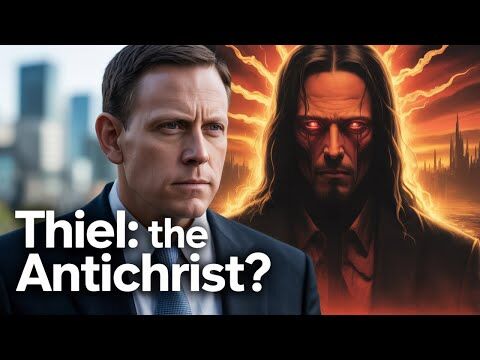One author wrote, “Christmas is when God came down the stairs of heaven with a baby in His arms.” What if Jesus had come as He deserved? Surely He would have been born with all the pomp and prestige of royalty. Instead, he was born as a peasant in a smelly stable, wrapped in swaddling clothes and laid in a crude cattle trough. The unassuming way in which He made His human debut defies reason. Jesus later said, “I am meek and lowly in heart” (Matt. 11:29b). This was no more powerfully portrayed than in His nativity.
Consider how Christ was born in a borrowed stable, preached in a borrowed boat, rode into Jerusalem on a borrowed donkey, ate the Last Supper in a borrowed room and was finally buried in a borrowed grave. But don’t be fooled by the simple scenery; it was all part of a divine disguise. God carefully planned Jesus’ birth to be so inconspicuous that, except for a few shepherds and magi, it went virtually unnoticed.
It’s hard to fathom why Jesus lived most of His life in obscurity. After His supernatural conception and birth, there is only one brief, childhood glimpse of Him at His Bar Mitzvah at age 12 (Luke 2:40-51). Jesus could have taken the world by storm as a teenage Messiah. Instead, He submitted Himself to God’s perfect will and timing. Priests under the Levitical order entered the priesthood at age 30, another way the great high priest fulfilled Moses’ Law to the letter.
Remarkably, for 30 years, the Son of God didn’t perform a single miracle, preach a sermon, cast out a demon or do anything noteworthy for the sacred record. We are left to wonder why. Again, it was all part of the divine disguise. Jesus’ first 30 years were so ordinary that many people missed His coming altogether. The Jews expected a Messiah with the political power and the military might to run the Romans out of Israel. But Jesus didn’t come to save His people from the Romans, He came to “save His people from their sins” (Matt.1:21b).
To many, Jesus was too normal to be the Messiah. In fact, when Jesus stood in His hometown synagogue in Nazareth and revealed His true identity (Luke 4:16-30), His own townsmen said, “Is this not the carpenter?” (Mark 6:3a) Then they accused Him of blasphemy and tried to throw Him over a cliff. During Jesus’ childhood, in 6 A.D., Sepphoris, the capital of Galilee, was destroyed by the Romans to crush a messianic-style revolt just four miles from Galilee. No wonder the wary Nazarenes were skeptical of Jesus’ claims. After all, Messiahs don’t build furniture, do they?
Joseph mysteriously vanished from the Bible after the incident in the Temple when Jesus was twelve. He was probably much older than Mary (common in those days). According to church tradition, Joseph died when Jesus was 18 years old. Jesus, being the eldest son (Matt.13:55-56), followed in His father’s trade as was customary. So, for more a decade, Jesus toiled as a common carpenter and likely helped support His mother and younger siblings. By doing so, He revealed the high priority God places on family, work and preparation. What a clever disguise! People would naturally expect the Messiah to pursue a more noble occupation, but from the dawn of time He had a knack for making things. He was much more than a carpenter—He was the architect of the universe. He hung the stars in space and set the moon in place (John 1:1-3).
The divine disguise worked to perfection. The Jews by and large rejected Jesus’ claims to Messiahship—”He was in the world, and the world was created through Him, yet the world did not know Him. He came to His own, and His own people did not receive Him: (John 1:10-11). First, there was the geographical problem. Some religious leaders who were nearly convinced He was the Christ hit this little snag, “Has not the Scripture said that the Christ comes . . . from the town of Bethlehem . . . Search and look, for no prophet has arisen out of Galilee.” (See John 7:40-53.) In retrospect, we now know Jesus was born in Bethlehem, fled to Egypt and then was raised in Nazareth of Galilee to fulfill three different prophecies (Mic. 5:2, Hos. 11:1, Matt. 2:23). It is both amazing and amusing that Jesus never bothered to set the record straight. He simply let His detractors speculate.
Then there is the illegitimacy claim—“We were not born of sexual immorality” (John 8:41), charging that Jesus was an illegitimate child. Yes, the recycled rumors of Mary’s pregnancy before she and Joseph were properly wed were still circulating 30 years later. Again, Jesus didn’t defend Himself or Mary’s virtue, or explain how His supernatural conception fulfilled Isaiah’s prophecy (Isa. 7:14) of a virgin-born Messiah. He simply let them have their say.
The incarnation is unquestionably the greatest story ever told. So why was it shrouded in such secrecy? Because, minus the mystery, the masses might have embraced Jesus as the Messiah thwarting the reason He was born—to bleed and die. Jesus deliberately disguised Himself as a carpenter to be rejected and so His death could facilitate man’s redemption. As Billy Graham wrote, “Bethlehem’s manger crib became the link that bound a lost world to a loving God.” C. S. Lewis captured the Christmas story in a nutshell, “The Son of God became man to enable men to become sons of God.” Think of it—the Messiah as a baby in a manger, the Christ as a carpenter in a career, the King of kings as a criminal on a cross. It was all part of the divine disguise. So, look beneath the surface, for behind His carpenter’s cloak, you’ll find God robed in human flesh. By the way, this “carpenter” is still making things, repairing broken lives and building His church and kingdom in us. {eoa}
Ben Godwin is the author of four books and pastors the Goodsprings Full Gospel Church. His weekly telecast, The Word Workshop, airs on TV-16 and Charter Cable #10 on Mondays at 9 p.m. and Tuesdays at noon and live streams on TV16HD.com. To read more articles, visit his website at bengodwin.org and take advantage of his 4-book bundle for $25.































































